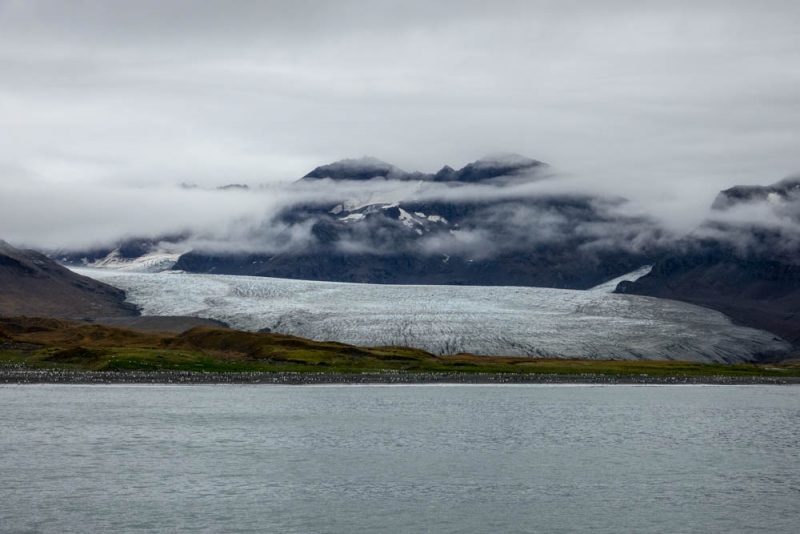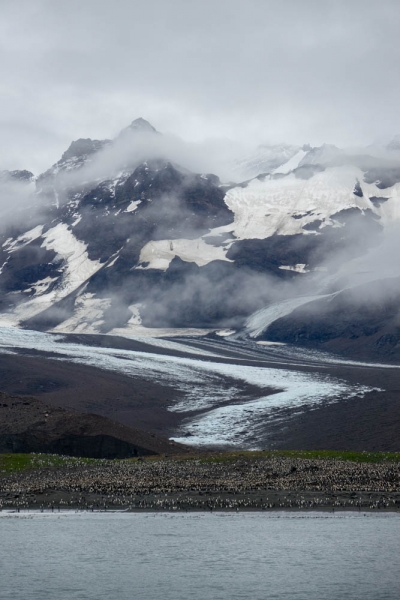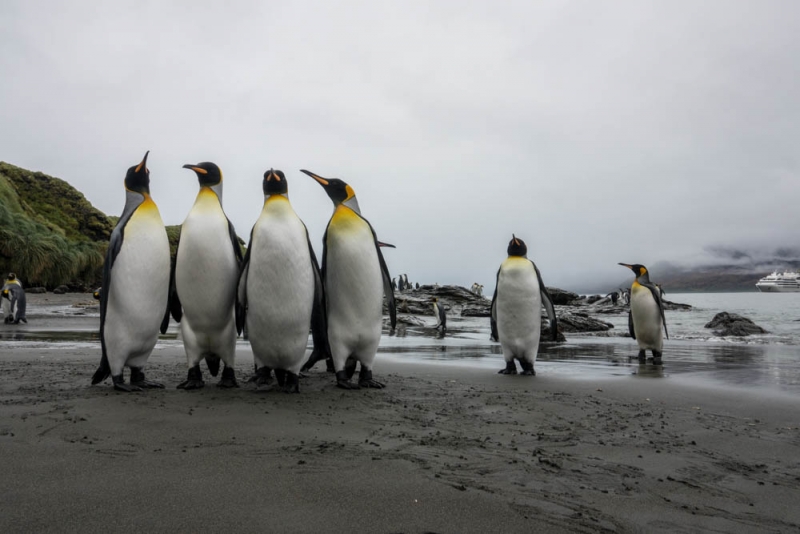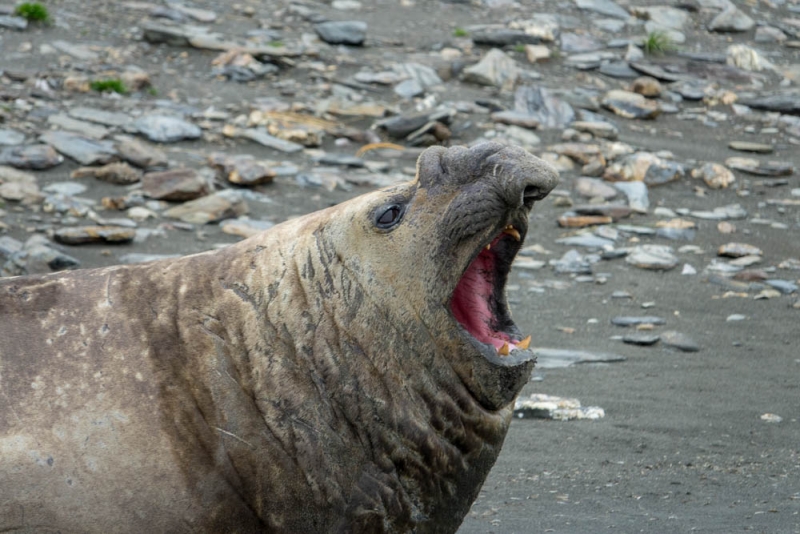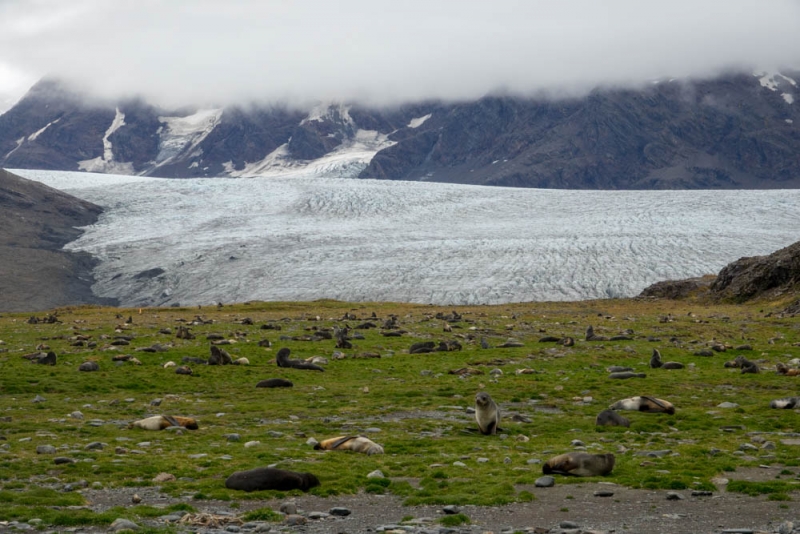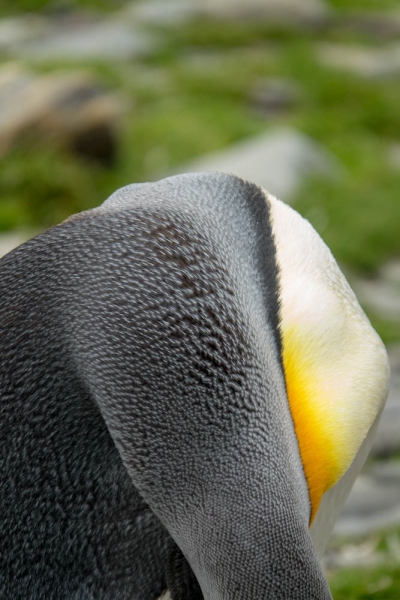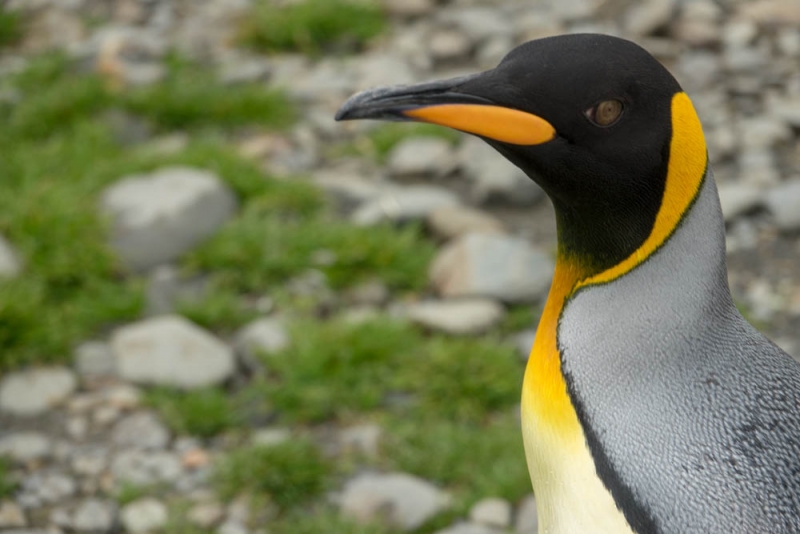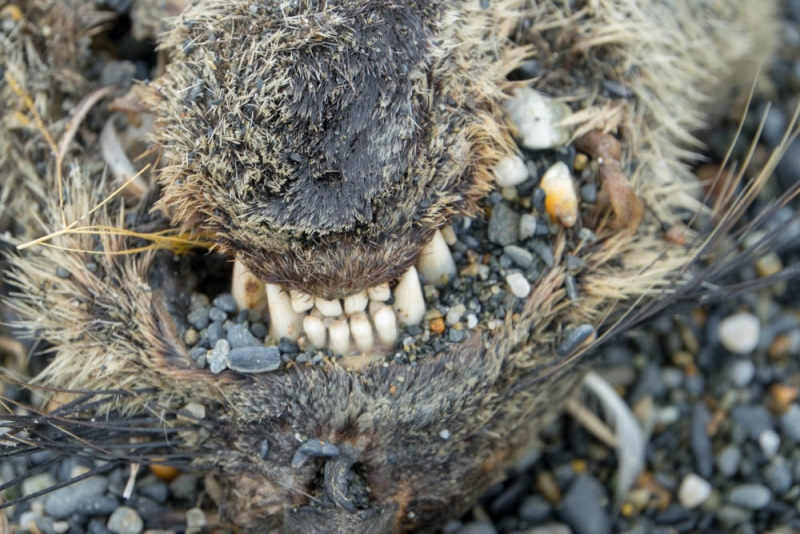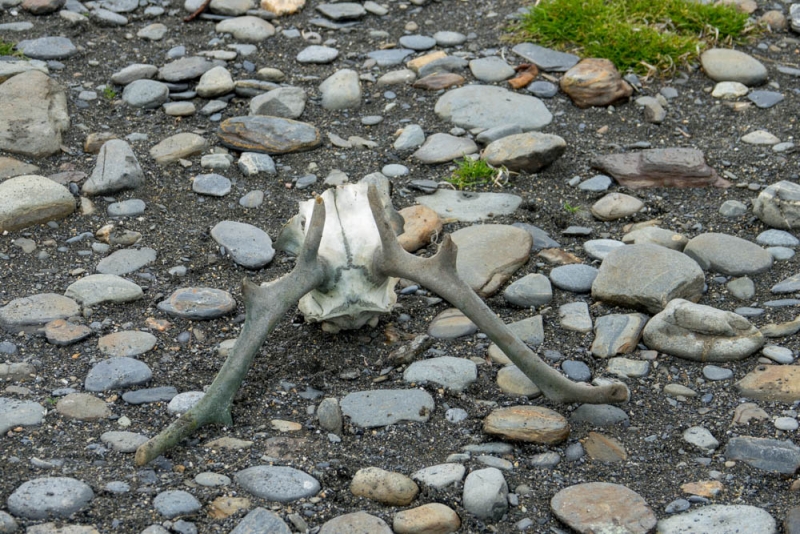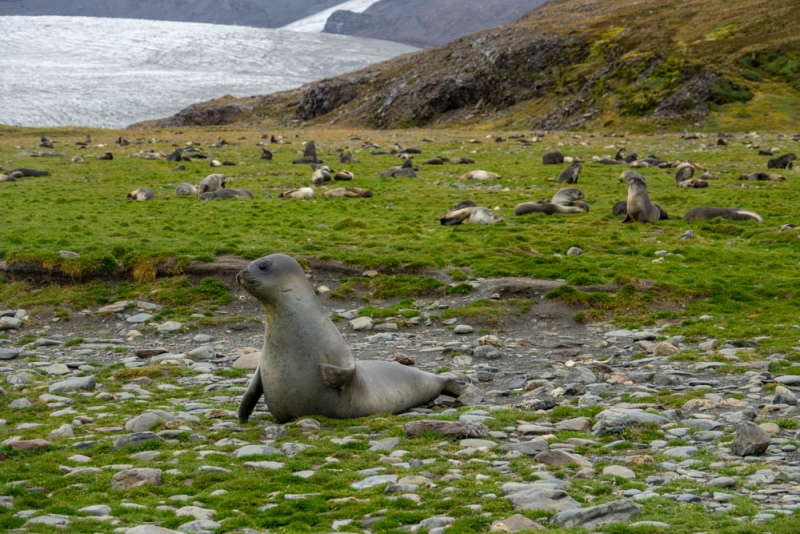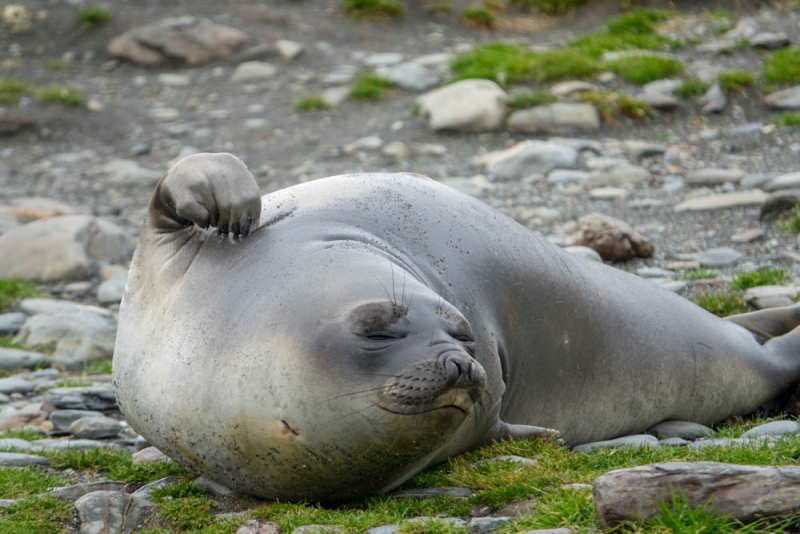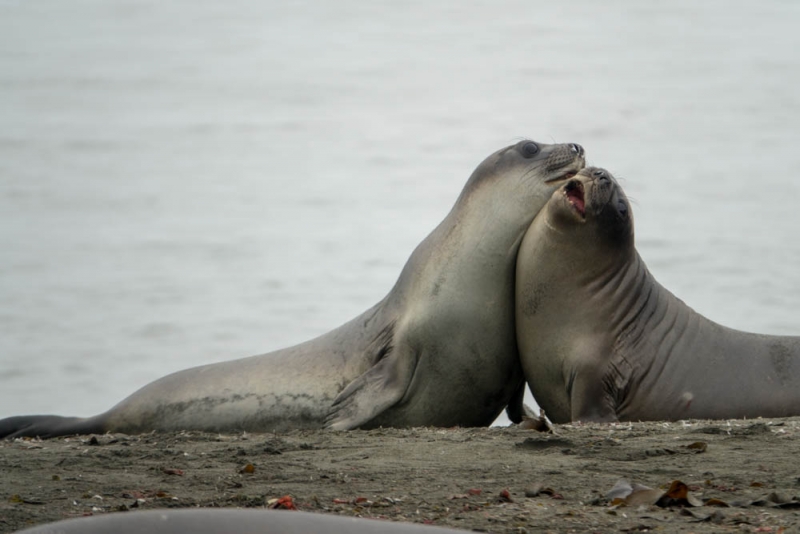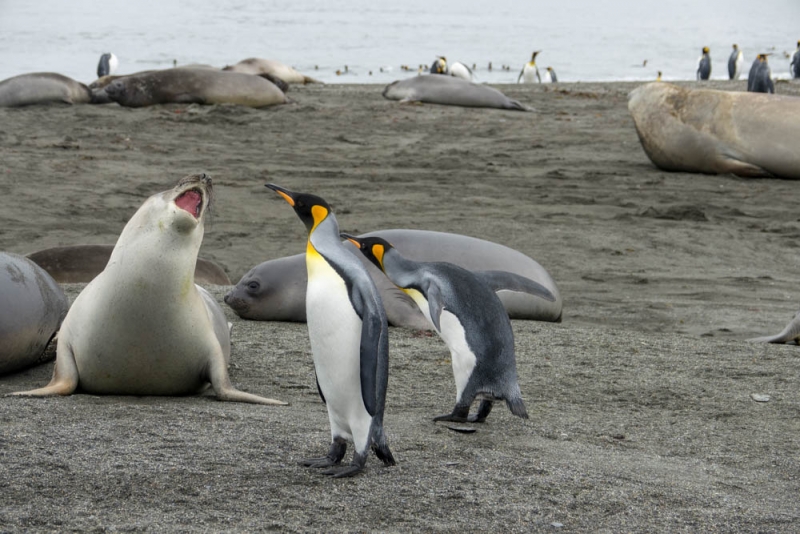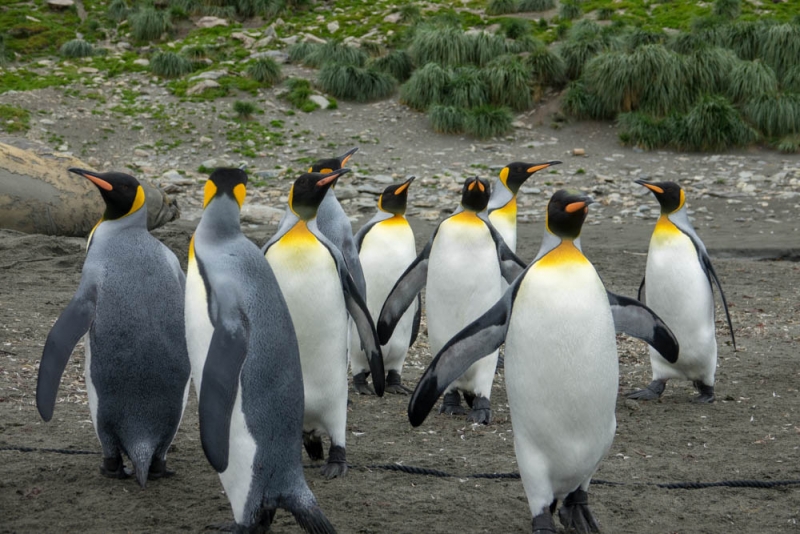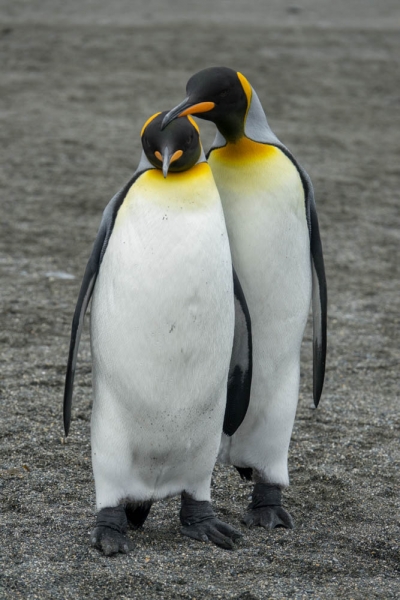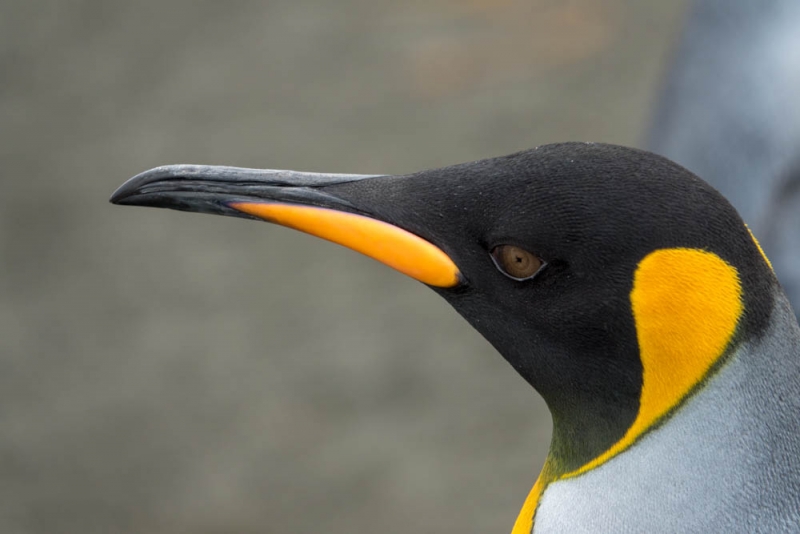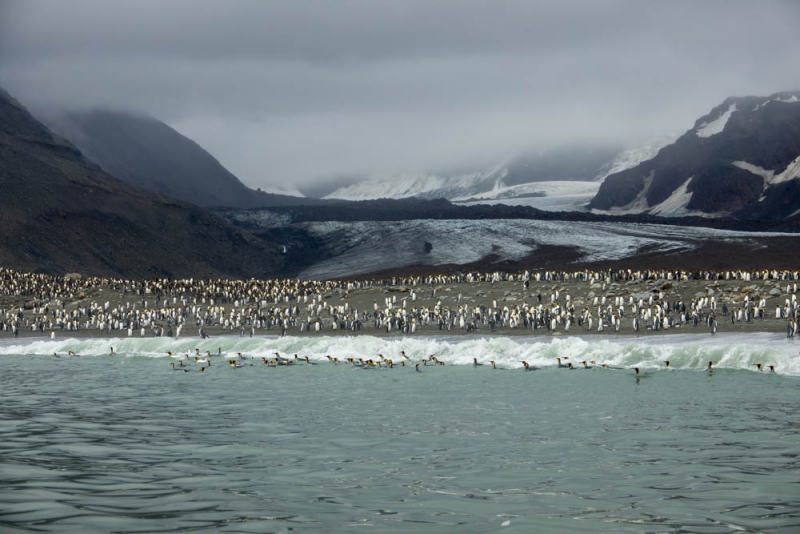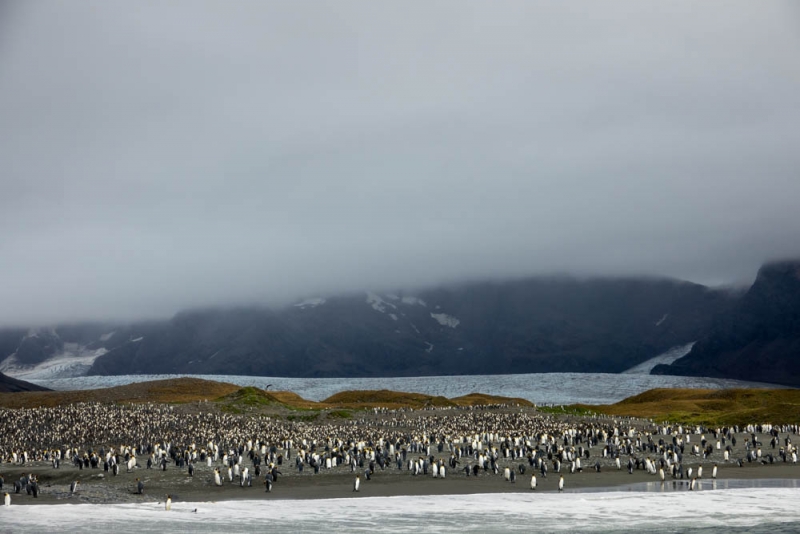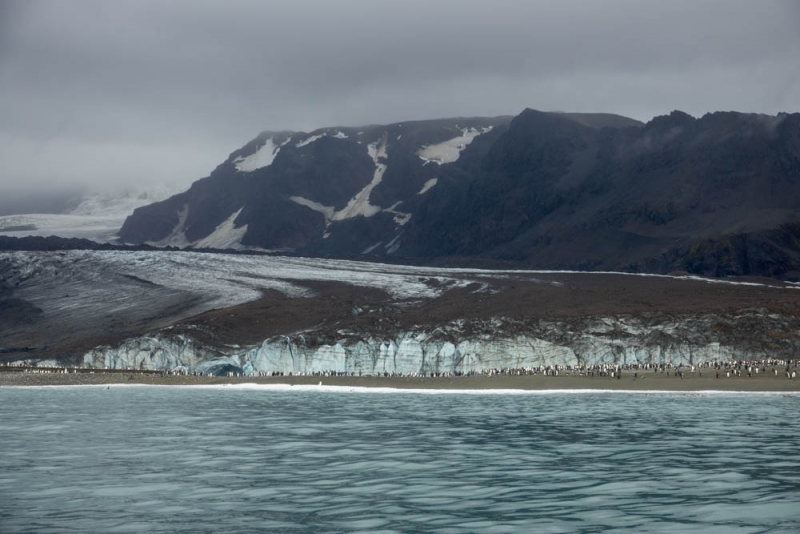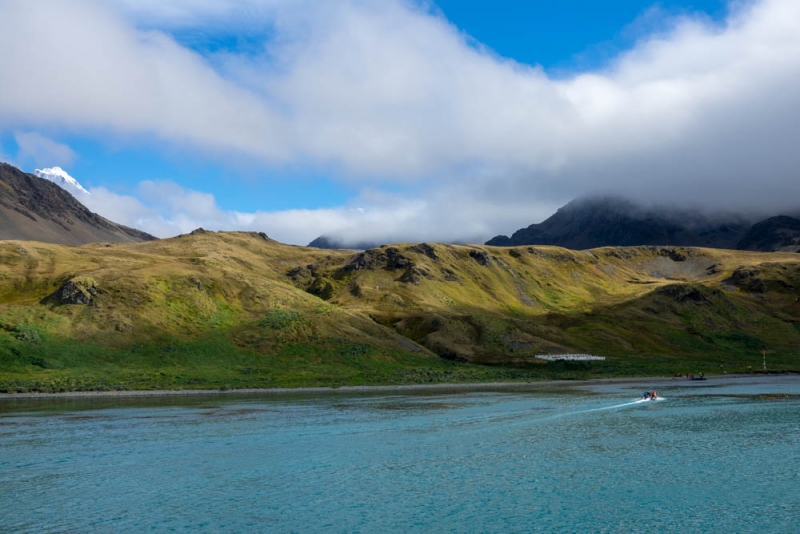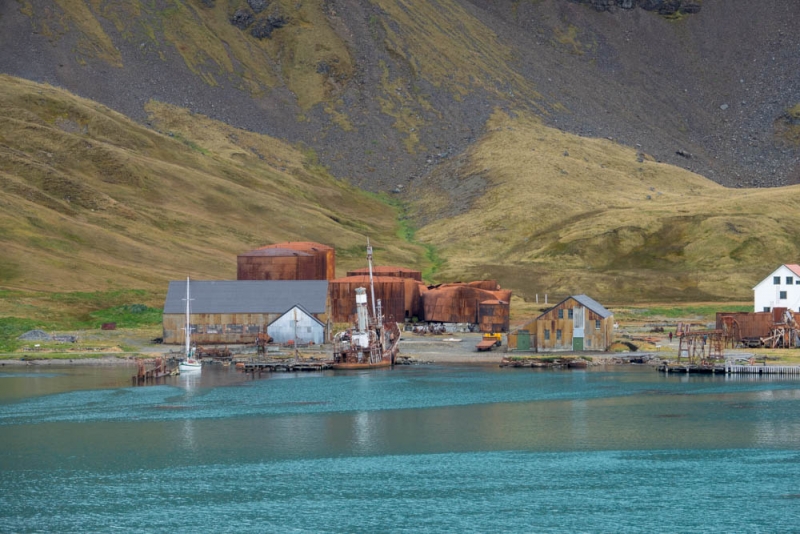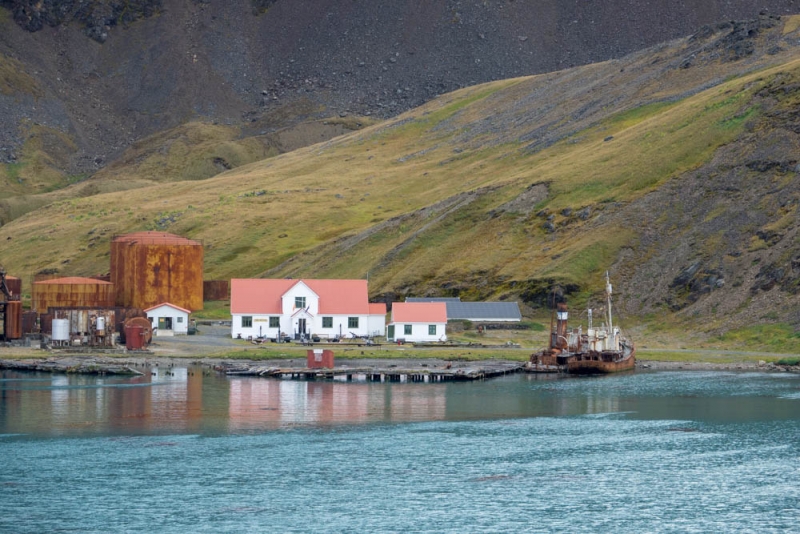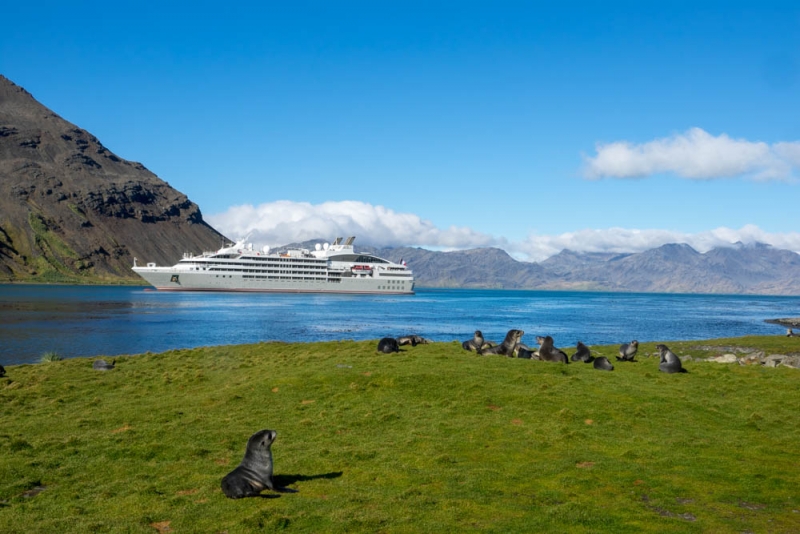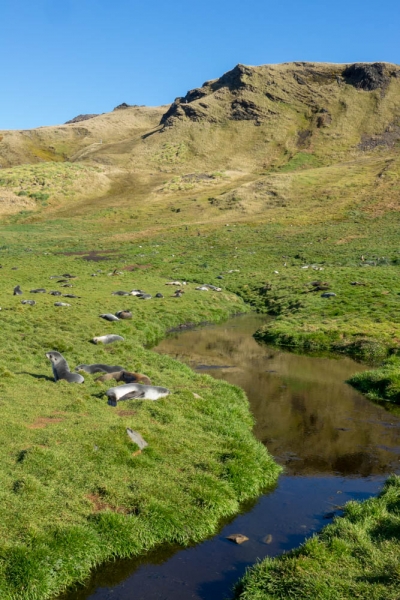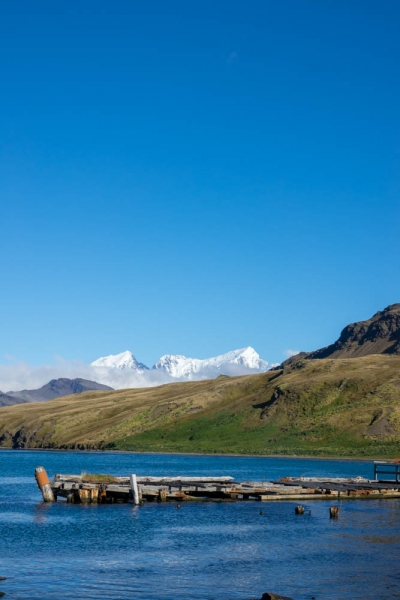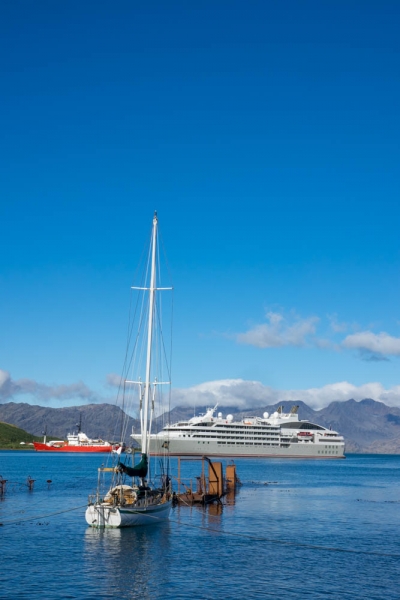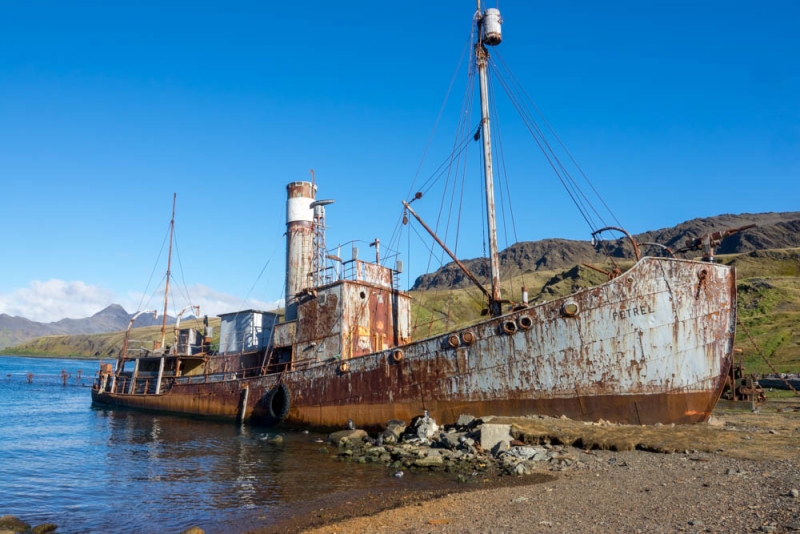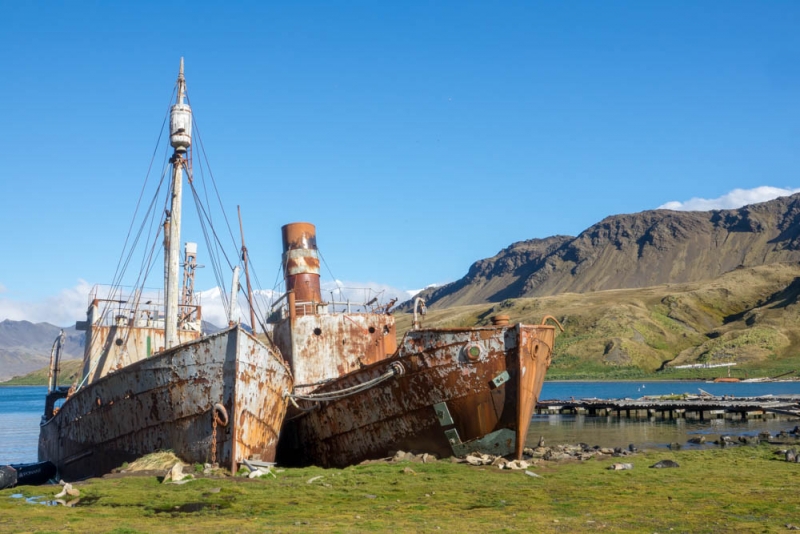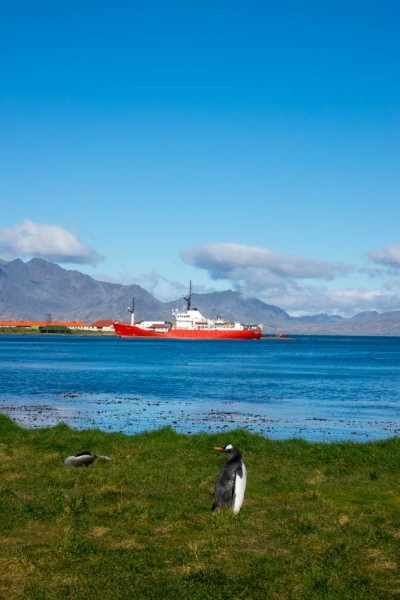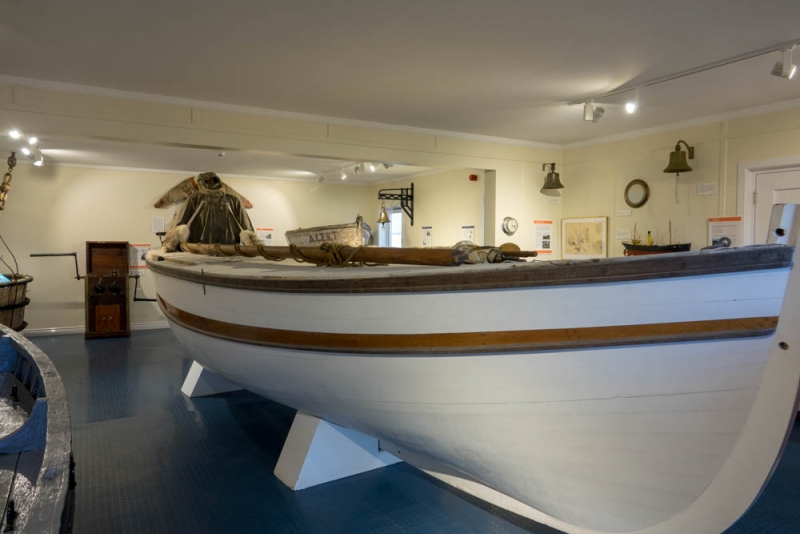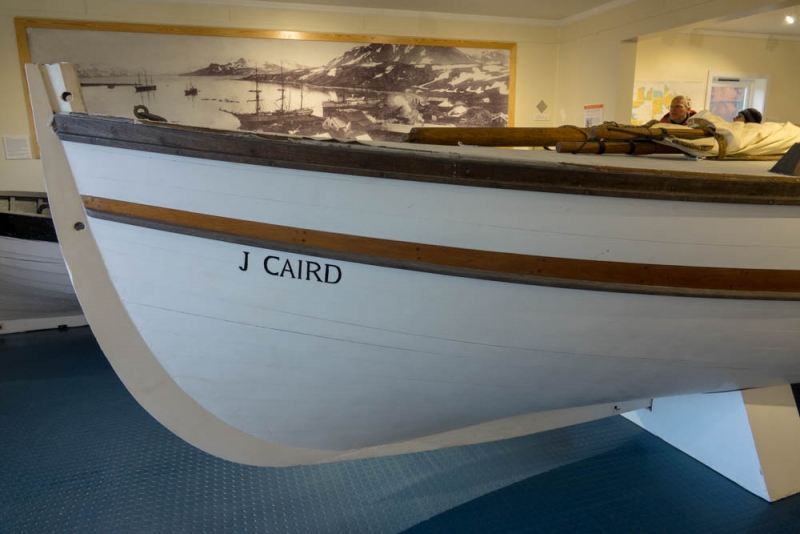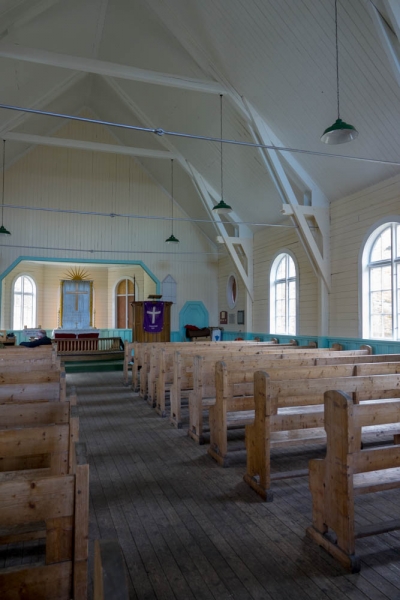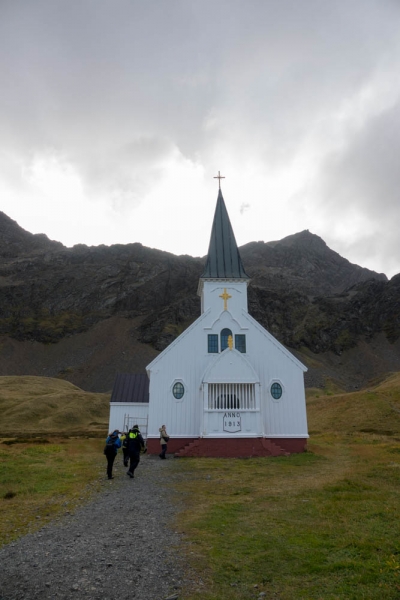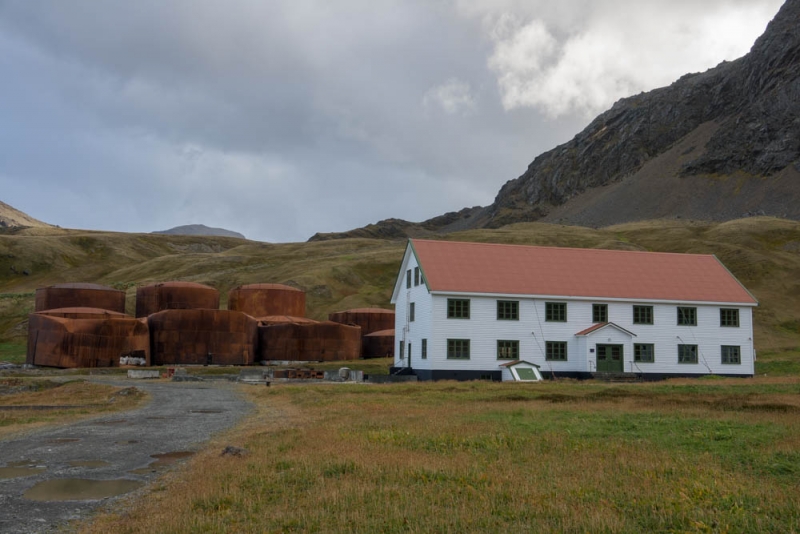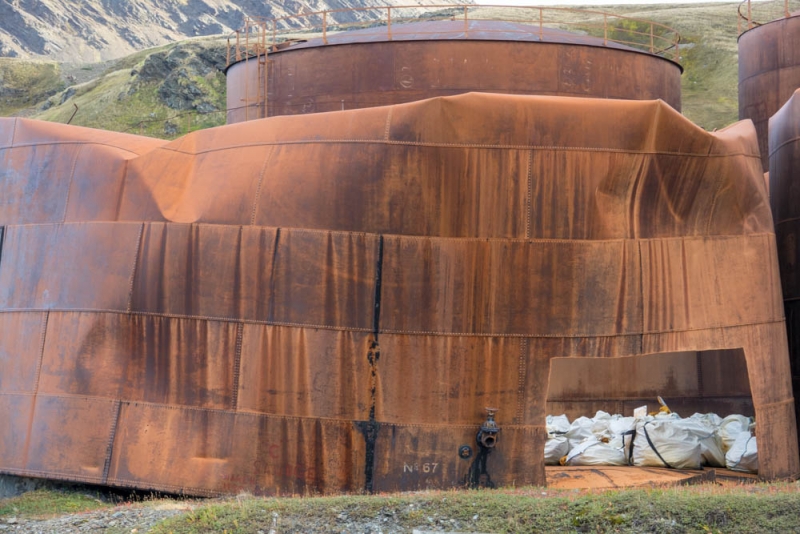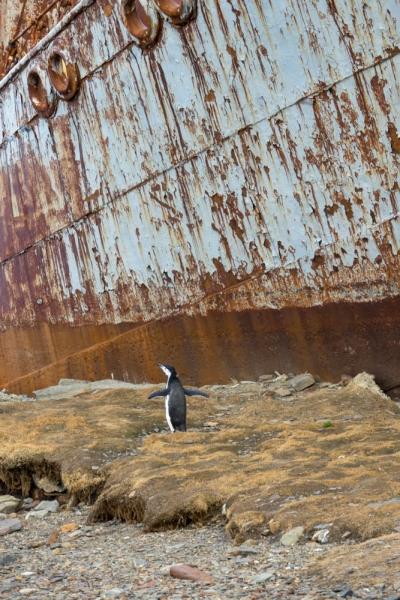St Andrew’s Bay
Le Lyrial arrives at St Andrew’s Bay around 6am to dense wet fog. I’m in the last group scheduled to land, so hopefully it clears up in a couple of hours. A panoramic image of St Andrew’s Bay shows the receding glaciers.
The amount of debris on the glaciers is reflected in the water quality – my efforts to get some underwater footage of king penguins is met with impenetrable ‘white’ water due to the amount of sediment in the water.
By the time I land at 8:30am, the sky has cleared a little, but it is still grey and overcast. The landing conditions were tough on my last visit to St Andrew’s too, with quite a bit of snow around. St Andrew’s is home to a massive king penguin colony, and a small number of weaner and juvenile wallowing bull elephant seals are camped near the landing site. The nearby field in front of the glacier is a creche scattered with well-fed Antarctic Fur Seal pups. The pups make all sorts of noises unique to them to help their mothers find them on their return. Grunts, whinneys, mewls and barks from the seals rival the noise from the king penguin colony.
Not all pups make it, and the carcass of this pup show the ‘milk teeth’ that the seal mothers have to contend with.
We are confined to a relatively small area as the expedition team have designated the river as being to dangerous to cross, which is disappointing. It also makes for a short landing of an hour, with a short zodiac cruise at the end on the way back to the ship. Not the greatest of conditions for what is a spectacular location in good weather. Last time I was here, the Norwegian reindeer were still in residence, now all that remains after the cull is a few antlers.
The weaner elephant seals are special creatures and always good photography subjects. Their flippers boast articulated joints, with the appearance of ‘fingers’ as they scratch themselves. The kings aren’t bothered by the seals either, with regulars altercations between penguins that want to return to the colony disturbing the slumbers of the weaners.
It’s usually impossible to tell the gender of the penguins, but in the case these two are in the process of becoming a bonded pair, which seem to involve the male trying to groom the female and escorting her around the colony ?
By the time we are leaving on the zodiac cruise, the fog has lifted a little, enough for some departing shots of the beach, colony and glaciers.
This afternoon, we are due to arrive at Cumberland Bay and Grytviken Cove.
Grytviken Whaling Station
My fourth visit to Grytviken, and it starts to feel a lot like visiting Stanley in the Falklands – once is enough. In contrast to St Andrew’s Bay a short distance away, the weather at Grytviken although cloudy along the mountains, looks like it will clear to a bright, sunny afternoon.
There has been an outbreak of any introduced weed at Grytviken, called pearlwort. A quarantine official from the British Antarctic Survey based at King Edward Point boards the ship and checks the boots of every passenger disembarking into zodiacs. We are also instructed that nothing can be placed on the ground, and the only place back-packs or anything else can be unloaded is on the concrete benches or concrete structures.
The landing site is in front of the cemetery, with the usual toast to Shackleton on offer from the Commandant. Frank Wild was interred here in 2011, and his ashes occupy a much more modest plot than Shackleton’s tombstone.
The challenge today is to find something new, so I decide to avoid the whaling station area and walk around to King Edward Point, the location of the fishery laboratories of the British Antarctic Survey. Along the way, the multitude of Antarctic fur seal pups make it clear that they are used to humans being around and aren’t as easily intimidated as at other locations. One man stands still as a pup approaches him, and it promptly has a taste of the top of his gumboots. Another reason to wear your waterproof pants over the top of your boots!
A small ocean-going yacht called the “Wanderer III”, from Aarosund, is visiting Grytviken, and is tied up away from the wharf. I later learn through a Facebook post by the South Georgia Heritage Trust that this yacht has brought “Team Rat” members called Wai, Ahu and Will to South Georgia. The three team members appear to be Jack Russell crosses.
Between the Wander, Le Lyrial, the refloated Petrel, Dias and Albatros whalers, and the fisheries patrol vessel, there is plenty of contrast in the ships in Grytviken cove.
At the whaling station itself, a large drain channelling the frigid water streaming down from the mountains makes a play pool for a tribe of fur seal pups that are using it for resistance swimming, and in the case of one pup, an excellent place for a good scrub and a bath.
By the time I’ve walked around the cove, the sky has cleared to a spectacular blue skied afternoon, with visibility through to the snow capped mountain range on the other side of Cumberland Bay.
The sunny weather isn’t going to last – as I head back to the whaling station, the skies are darkening, and with an hour left for the landing, most of the passengers have returned to the ship. This makes it an ideal time to wander around the replica of the James Caird, the excellent and now almost deserted museum, and the church.
Since my last visit 6 years ago, it looks like the old accommodation building for the whalers and sealers has undergone a re-roofing and a slick new coat of paint. There was quite a bit of snow around on that visit though so it is entirely possible that I just didn’t notice it on that visit. Wandering around one of the partially collapsed storage vats sees it being used for storage of debris presumably.
There are three species of penguins using Grytviken as a moulting location – some gentoos and king penguins at King Edward Point, and this solo chinstrap penguin that has decided that the Petrel whaler provides an adequate location to replace it’s feathers.
Somewhat unusually, the base staff from the museum and the British Antarctic Survey are not invited on board for dinner, and shortly after 7pm, Le Lyrial heads out of Cumberland Bay in search of an anchorage for the night.


